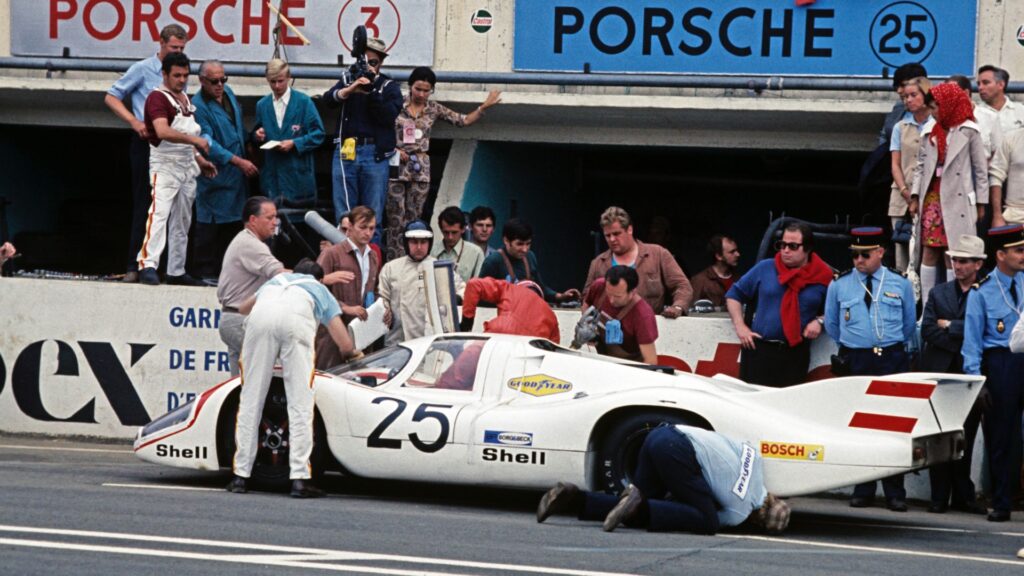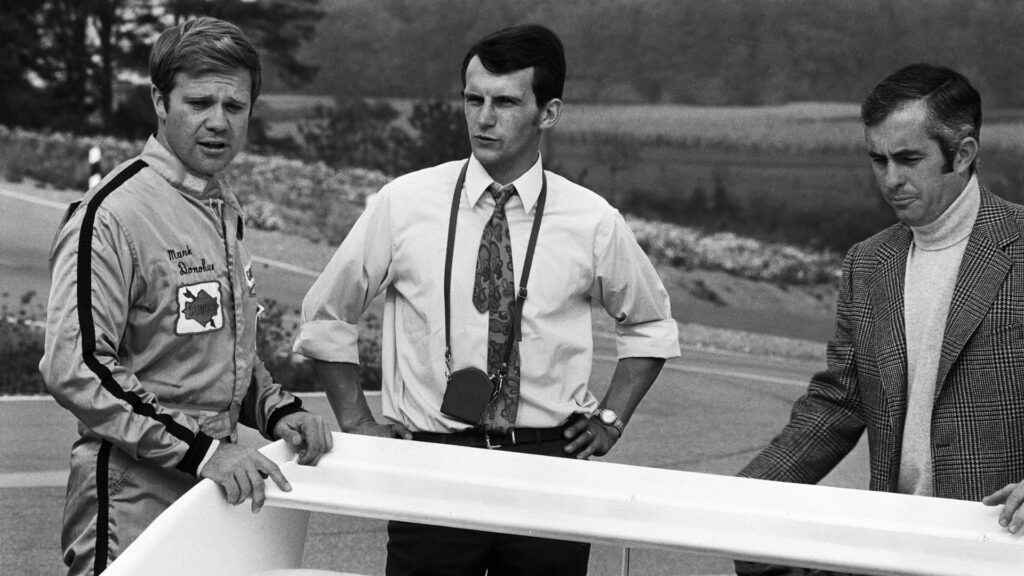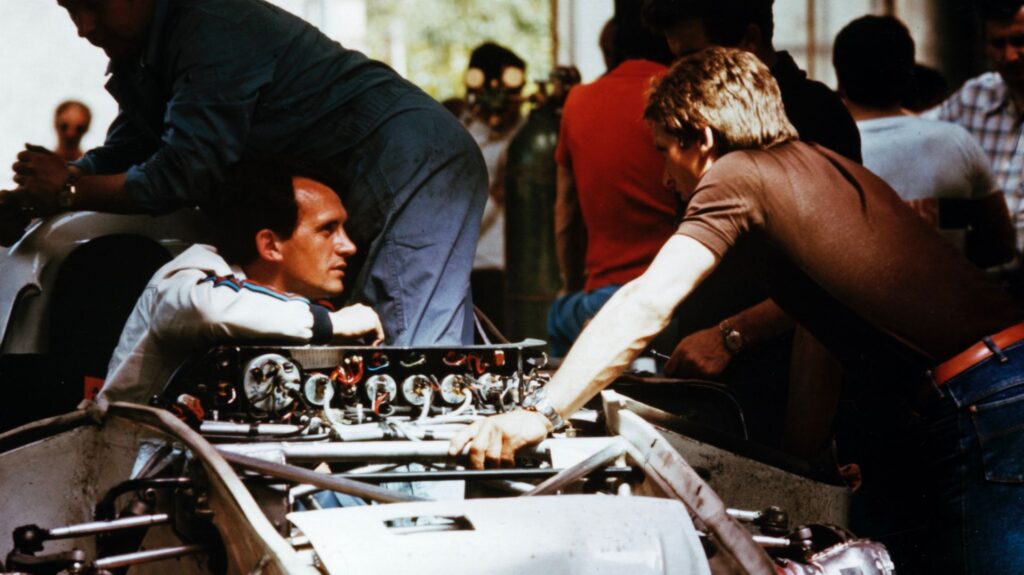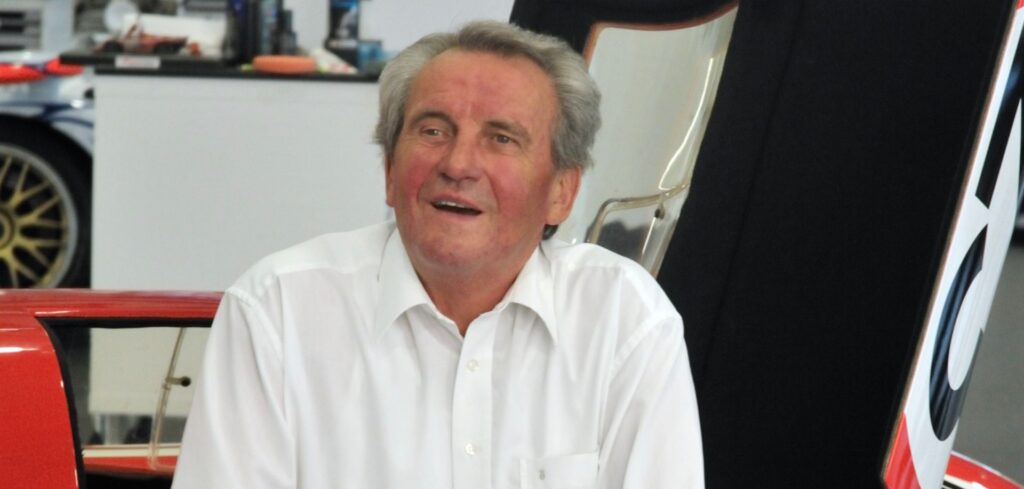Professor Helmut Flegl, one of the architects behind the Porsche 917 and many other iconic race cars from the Stuttgart marque, has turned 80.
Flegl joined the car maker in 1966. Just three years later, the 27-year-old graduate engineer found himself responsible for the 917 project alongside Hans Mezger and Peter Falk. As a suspension specialist, it was Flegl’s task to turn the unruly racing car into something Porsche’s drivers could tame and win with. “For my team and me, the biggest challenge at the time was to reconcile the potential of this car with the needs of the drivers,” recalls Flegl.
The first iteration of the 917 was almost unmanageable, even the most seasoned drivers struggled to tame it, and at its Le Mans debut in 1969, it was marred by the death of gentleman 917 driver John Wolfe at Maison Blanche on the first lap and hobbled by reliability issues.
Spurred on by Ferdinand Piëch – who desired overall victory for the car in La Sarthe – Flegl and his team worked tirelessly to optimize the 917’s handling with an intensive track testing program. The pace of development was relentless and would take its toll on both test drivers and machines. Not least in April 1970, when Porsche factory driver Kurt Ahrens tested a modified 917 long-tail version at the sealed-off Ehra-Lessien test site.
 A team of technicians led by Flegl and Peter Falk ran the test program, which was cut short by a vicious accident. A gust of wind from the side pitched the car into the guard rails, tearing it in two – a lucky Ahrens survived with bruises and contusions. Nevertheless, the blood, sweat and tears paid off and the 917 KH claimed the first overall Porsche victory in the Le Mans 24 Hours in 1970.
A team of technicians led by Flegl and Peter Falk ran the test program, which was cut short by a vicious accident. A gust of wind from the side pitched the car into the guard rails, tearing it in two – a lucky Ahrens survived with bruises and contusions. Nevertheless, the blood, sweat and tears paid off and the 917 KH claimed the first overall Porsche victory in the Le Mans 24 Hours in 1970.
The efforts of Flegl and his Weissach engineering colleagues Mezger and Valentin Schäffer were appreciated by drivers. For example, when Jackie Oliver took the wheel of a Porsche 917 LH on the second day of pre-tests for the Le Mans 24 Hours in 1971, Flegl cautioned him: “We’re not quite sure about aerodynamic stability on the straights beyond a speed of 300.” Six trouble-free laps later, the feedback from Oliver was positive, giving Flegl the confidence to undertake some subtle modifications to the car.

Outlawed from Le Mans by new engine capacity regulations, in 1972 a development of the car, the 917/10 Can Am Spyder, conquered the North American CanAm racing series with the active collaboration of Flegl, and evolved into the most powerful racer Porsche ever fielded. For the 1973 season, Flegl lengthened the wheelbase of the 917/30 to improve its stability, which coupled with revised aerodynamics, gave drivers the confidence to exploit its staggering 1,100bhp.
Flegl went on to be involved in the development of the 936, interrupted by a brief sojourn to project manage the 928 road car in 1976, before returning to Porsche’s racing department in 1978. According to Flegl, one of his big regrets was that the company did not persist with its Indycar project in the late 1980s. “Had we been given one more year, we would have achieved our goal.”
Flegl concluded his career in 2003, after 37 years, as head of the Research and Advance Engineering department in Weissach.




